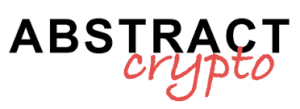Citrea has launched its bridge Clementine on the Bitcoin testnet, leveraging BitVM to enable Ethereum-style smart contracts on Bitcoin. This development could make Bitcoin a solid foundation for global finance.
Let’s see all the details below.
Citrea introduces the Clementine bridge based on BitVM to expand Bitcoin’s functionalities
As anticipated, Citrea has recently made an important step forward in the world of cryptocurrencies by distributing its bridge Clementine on the Bitcoin testnet.
This bridge, based on BitVM, has been designed to open new possibilities for the use of Bitcoin, transforming it into a system capable of supporting Ethereum-style smart contracts. Ethereum.
This innovation could lead Bitcoin to become not only a store of value, but also a technological base for global finance.
The idea behind Citrea’s project is simple but revolutionary: to use Bitcoin as a “settlement layer” for the financial world.
In other words, Bitcoin could become the core around which an entire decentralized financial infrastructure revolves. This is thanks to the possibility of executing advanced operations and contracts without abandoning the security and stability of the main blockchain.
This concept has been put into practice with Clementine, which uses the BitVM paradigm to enable complex operations on the Bitcoin network.
BitVM, introduced last year by Bitcoin developer Robin Linus, is an innovative technology that allows Bitcoin to execute smart contracts similar to those found on Ethereum.
Historically, Bitcoin has been limited in its support for smart contracts due to its simplified nature and its emphasis on security and decentralization.
However, BitVM changes the rules of the game, opening the door to new applications that could transform the way Bitcoin is used.
The compatibility with EVM
The Clementine bridge allows Bitcoin to interact with Citrea in a bidirectional manner, enabling users to lock their Bitcoin on the main blockchain and receive an equivalent token on Citrea.
This token can be used within the Citrea ecosystem, and then be “burned” when the user wishes to redeem their bitcoin on the original blockchain.
The process has been described by the Citrea team as a “minimal trust bidirectional peg,” which means that the interaction between the two chains occurs in a secure manner and without the need for reliable intermediaries.
A fundamental aspect of Citrea is its compatibility with the Ethereum Virtual Machine (EVM). This means that all decentralized applications (dApp) currently existing on Ethereum can be easily transferred to Citrea without significant modifications.
The EVM compatibility offers a significant advantage for developers, as it allows them to replicate the successes and innovation of the Ethereum ecosystem on Bitcoin, thanks to the infrastructure provided by Citrea.
Orkun Mahir Kılıç, CEO of Chainway Labs, who is behind the construction of Citrea, confirmed in an interview that “all applications on Ethereum can be deployed on Citrea without having to change anything”.
The implementation of BitVM and the distribution of Clementine on testnet are just the beginning of a revolution that could see Bitcoin transform into a more complete and versatile platform.
BitVM allows the compression of programs into subprograms that can be executed directly within Bitcoin transactions. This reduces network congestion and lowers fees.
In practice, BitVM acts as a conduit between the rollup and the Bitcoin network, allowing transactions to be moved off the main blockchain while still maintaining Bitcoin as the base layer for security and verification of transactions.
Objectives and funding of Citrea
This innovation could lead to greater scalability for Bitcoin, mitigating one of the most discussed problems of the cryptocurrency: the slowness and cost of transactions.
Moving complex calculations and operations off the main chain allows for reducing the load on the network, making Bitcoin more accessible and functional for large-scale use.
Citrea is not just a technological project, but an attempt to solve one of the main limitations of Bitcoin. That is, its relative simplicity compared to more complex blockchains like Ethereum.
If Bitcoin managed to integrate smart contract functionality and advanced calculations without
sacrificing its security, it could become not only a global store of value, but also the backbone of the new decentralized finance.
The ambition of Citrea to make Bitcoin the “base for global finance” is not just a utopian vision, but a concrete project supported by significant funding.
In February, Citrea raised 2.7 million dollars in initial funding led by Galaxy. A clear sign that investors see the potential of this technology.
If this initiative is successful, we could witness a radical transformation of the role of Bitcoin in the cryptocurrency ecosystem and in global finance.
No longer just a digital currency, Bitcoin could become a complex infrastructure capable of supporting advanced financial applications, smart contracts, and potentially, zero-knowledge proofs.
In conclusion, the introduction of the bridge Clementine on the Bitcoin testnet represents a decisive step towards a future in which Bitcoin will not only be an investment tool, but also a platform for the development of advanced financial applications.
Making it consequently possible to have decentralized and global finance with Bitcoin as the fulcrum.


